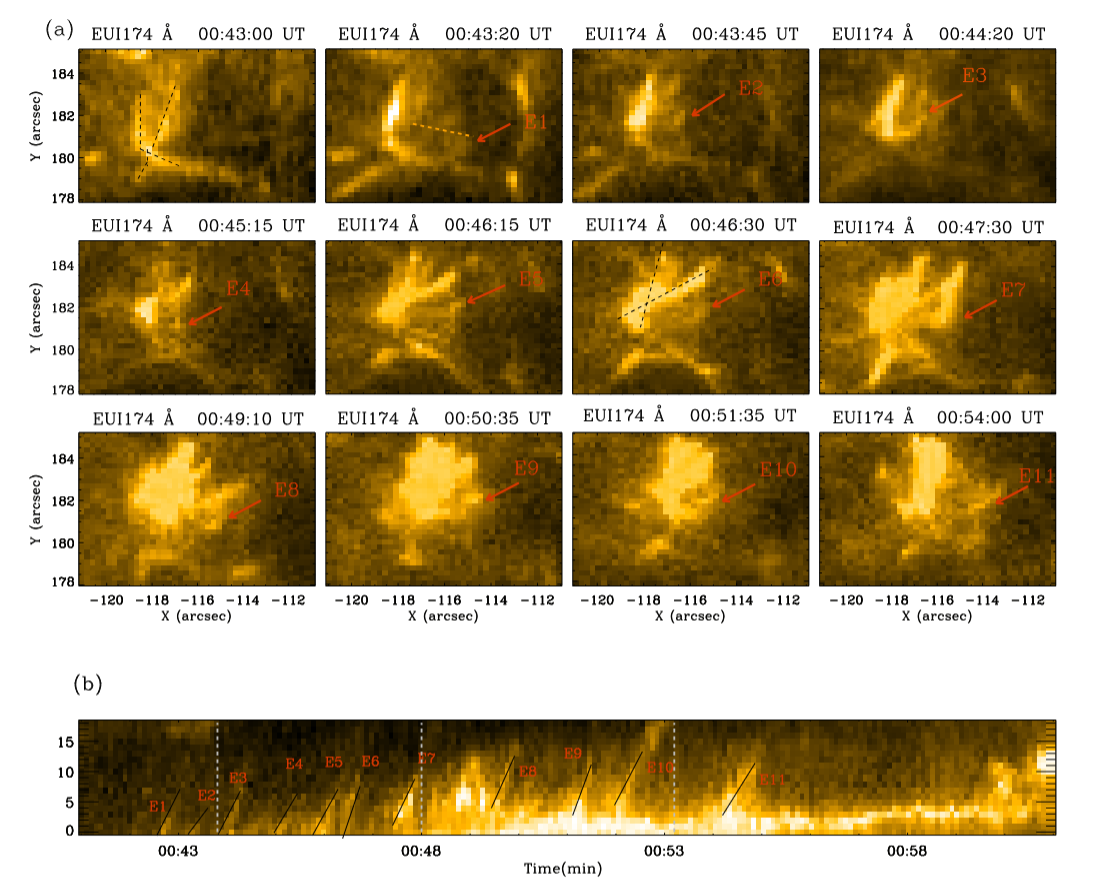
A recent study published in The Astrophysical Journal Letters reveals new insights into the triggering mechanisms of solar microflares and the self-similarity of solar flares. This research was led by Prof. BI Yi from the Yunnan Observatories of the Chinese Academy of Sciences (CAS).
Traditional theories of solar flares suggest that they are driven by outbursts of magnetic rope structures. This classical model explains many features of the Sun's large-scale energy releases. However, this study focuses specifically on microflares and suggests that their triggering mechanisms differ from those of larger flares.
The researchers utilized data from the Solar Orbiter's Extreme Ultraviolet Imager (EUI) and conducted multi-platform joint observations using the Solar Dynamics Observatory (SDO) and the Atmospheric Imaging Assembly (AIA). They made the first observations of tiny ejections occurring alongside microflares. These ejections originated from the centers of three homologous microflares within a dipole magnetic field. Initially, they appeared as point-like structures with a diameter of just 103 km, rapidly evolving into a ring-like shape that propagated perpendicularly to the microflares' ring structure.
The researchers proposed that these tiny jets may be triggered by the reconnection of small-angle misaligned magnetic fields within a braided magnetic field. This new mechanism challenges the traditional view and provides an alternative explanation for the energy release associated with microflares.
Notably, the proposed mechanism has similarities to the process of nanoflares, which have long been hypothesized to be a key source of coronal heating. By showing that small-angle magnetic reconnection can trigger both nanoflares and microflares, the study reveals a self-similarity in the physical mechanisms of flares across different energy levels. This implies that the basic physical processes involved in solar flare energy release may be universal across larger energy scales.
This study not only offers fresh perspectives on the triggering mechanisms of microflares but also provides important clues for investigating whether similar self-similar properties exist in larger-scale flares.
This work was supported by the National Science Foundation of China, the CAS "Light of West China" Program, and other funding sources.

Figure 1:(a) Snapshots of 11 tiny ejections (E1-E11, as marked by red arrows) captured in EUI/HRIEUV 174 Å images. Black dashed lines indicate the crossing flaring loops. (b) Time-distance plots taken along the orange dashed lines plotted on panel (a). (Image by WANG Qingmei)

86-10-68597521 (day)
86-10-68597289 (night)

52 Sanlihe Rd., Xicheng District,
Beijing, China (100864)

